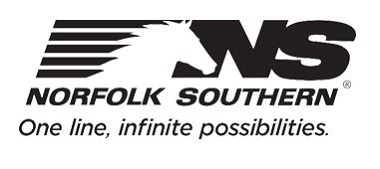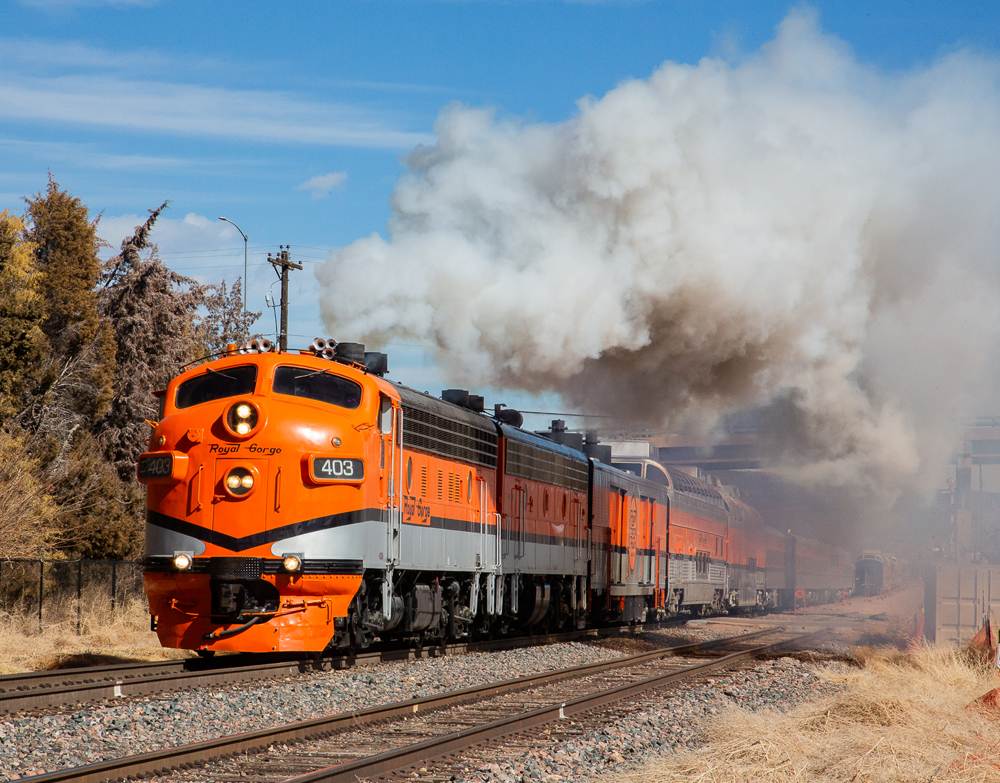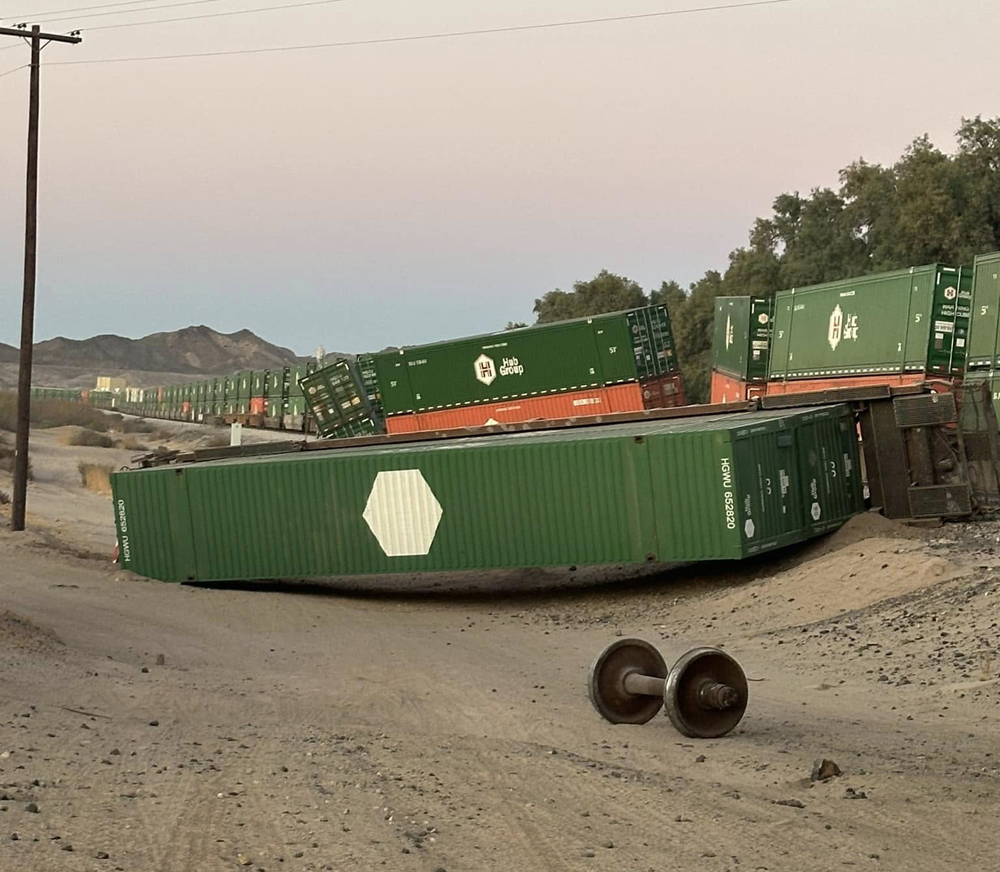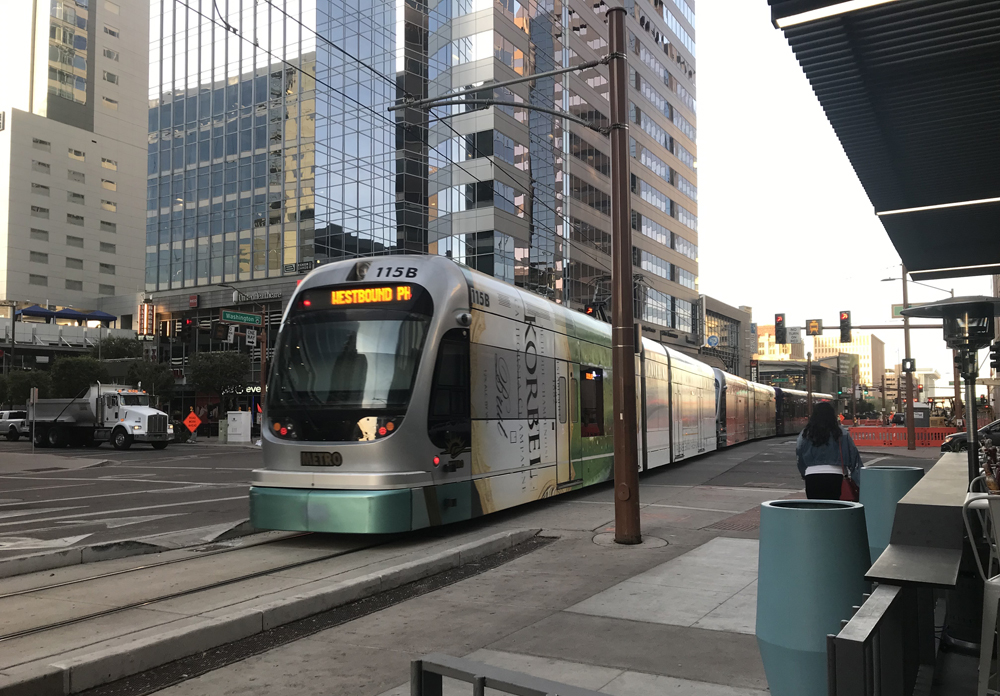ALTOONA, Pa. — Cleanup continued Saturday on a Norfolk Southern derailment at the landmark Horseshoe Curve.
Norfolk Southern spokeswoman Rachel McDonnell Bradshaw told the Altoona Mirror that 11 cars were involved in the Friday evening derailment, none with hazardous materials, and that the cause is under investigation. The Mirror had previously reported that the train involved had 141 cars.















That is the way most mainline wrecks are cleared, just get the cars out of the way so the tracks can be repaired and trains can pass again. Did that with a 47 car wreck at Elyria Ohio in 1988, took about a month to load up the damaged hopper cars and get them to be repaired or scrapped.
Watched most of it on Youtube Saturday
What video where?
I was quite impressed (?) at the way they casually dumped the three center-beam flats on the back of the curve for later pickup. Maybe damaged too much to be rerailed and towed away. Were the crews all NS or did they call in Corman or another wreck specialist to help? Having a wreck and cleaning it up on camera is somewhat unusual, Luckily no mike to hear some of the cuss words that may have been used.
Great comments on train makeup and the root cause for that here, nothing to add.
Empty (light weight) cars at the front of a long train being pulled upgrade around a curve without a pusher caused the derailment. Model railroaders know that you will have derailments and we saw that on the prototype. Glad that nobody got hurt and the recovery went well.
Page 32 of Trains July issue has an interesting article titled ‘Train Makeup 101’ that discusses how correct train composition minimizes derailments.
There are interesting economic questions. How much time and effort (expense) do you put into building stable trains versus the cost of cleanups and traffic delays if you don’t? Further, what are the odds of a train derailing on any given route if the makeup is not optimized? Are there some places where running two shorter trains costs less than optimizing the makeup of a single long train?
You also have to wonder if the 19th century airbrake technology is up to the task of handling long, heavy trains? Rail cars with sensors to measure stress on the couplers and side forces that try to pull the car off the rails could be used to warn the engineer and the computer program operating the locomotive when dangerous conditions exist. Microprocessor controlled brakes could apply the correct amount of force to manage train slack. Rotation sensors on the axles would allow for implementation of antilock braking. Railroads need to adopt advanced technology to make a safer, cheaper transportation system.
The train stringlined on the curve. Whoever the nitwit was that decided not to supply helper power should take some of the heat, but also NS’s operating department’s policy that penalizes engineers if they don’t let “LEADER” run their trains. It might know the topography and train weight and length, but has no way of compensating for a poorly made-up consist. And yes, PSR is definitely a contributing culprit.
Good thing nothing was on track 2 when that happened.
“Loads [i.e., heavy cars] up front, empties [i.e., lighter-weight cars] on the rear.” Train makeup 101; seen it in older RR rulebooks.
This sure seems to be a “shoulda known better” situation. Three AC locos at 10 mph in notch 8 = 375,000 # TE. Lucky they didn’t pull a knuckle, too.
A recap of the video is showing the engines approaching the camera view and then your hear the metal on metal noise, The engine continues forward into full view with no cars behind it, Few moments later the camera scans the wreckage. Vary interesting view of how the equipment is used to upright the rail cars and also how they put 3 lumber cars into a storage state along the tracks.
Well I see the PSR manifest model of longer trains is getting off to a RIP roaring start!
Relax, pundits, I’m kidding (well maybe only partly).